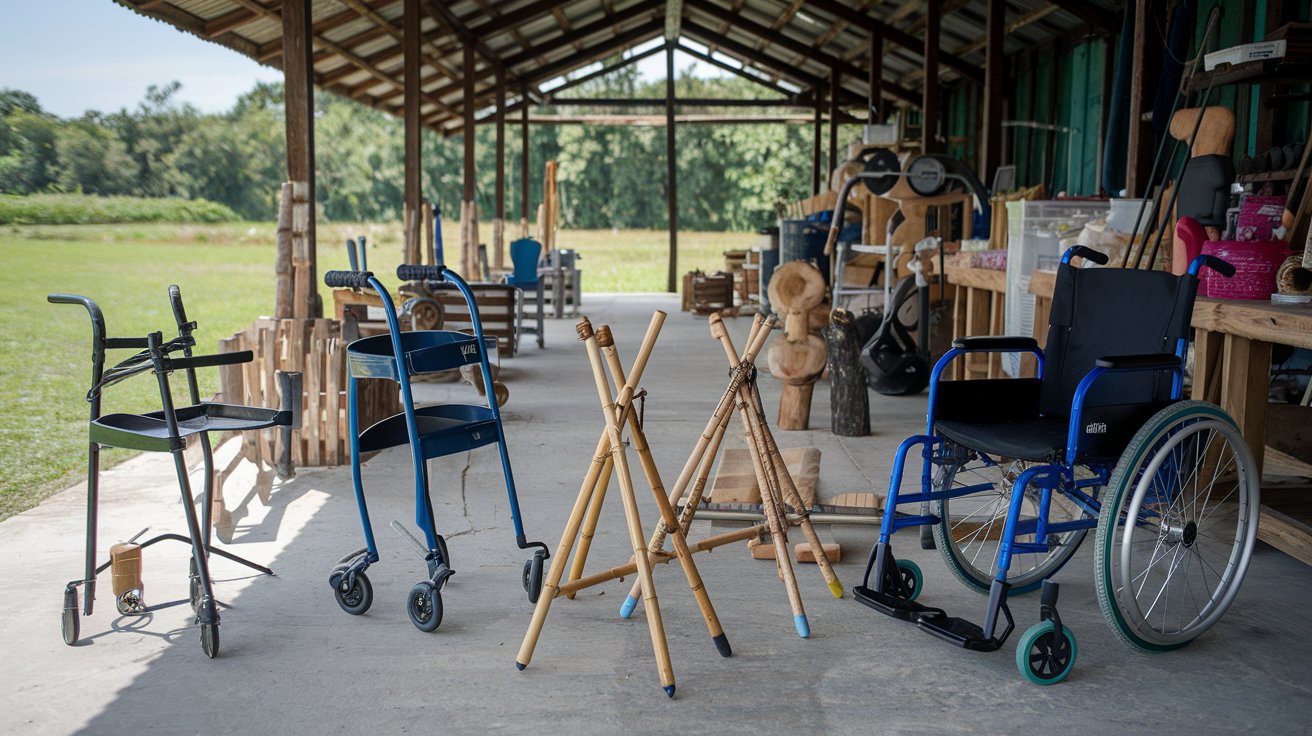How to Prevent ACL Injury Skiing - Complete Guide
Picture this: You're all set for an amazing winter adventure in the snowy mountains, excited about skiing down the powdery slopes. But before you dive into the fun, it's essential to think about staying safe. Skiing can be super exciting, but there's a risk of getting hurt, especially with something called ACL injuries.
The good news is that recent research has uncovered exercises that can help prevent these injuries. In this blog post, we'll discover the secrets to keeping yourself safe while skiing, so you can have a worry-free and super fun time in the snowy wonderland. Let's get ready and learn these simple but powerful moves to make your snowy adventures absolutely unforgettable!
What is the ACL?
The ACL(Anterior cruciate ligament ) is like a superhero inside your knee, connecting your thigh bone to your shinbone and making sure everything stays in place when you play sports or have fun in the snow. It's like a strong rope that keeps your knee stable and stops it from wobbling when you jump, twist, or ski.
Imagine it as a knight in shining armor for your knee, working behind the scenes to make sure you can move smoothly and enjoy winter sports without any problems. So, next time you're playing in the snow, give a little thanks to your ACL, the secret hero of your knee!
Helpful Exercises For Skiing ACL Injury Prevention
Here are some important things as recommended by physiotherapists to remember before you begin:
- Make sure your hips, knees, and feet are lined up properly – you can check in a mirror to be sure!
- When you squat down, be careful not to let your knee go too far past your toes. It might help to lean back a bit and put more weight on your heels.
- Don't forget about your core – that's the muscles in your belly. Keeping them tight is like having a superpower for good balance!
So, next time you're moving around or doing exercises, remember these tips to keep your body in great shape and stay balanced!
Single Leg Balance with Toe Touch
The "Single Leg Balance with Toe Touch" is an exercise that helps improve balance, stability, and flexibility. Here's how you can do it:
- Starting Position:
- Stand on one leg, lifting the other leg slightly off the ground.
- Keep your standing leg slightly bent at the knee.
- Arms Position:
- Extend your arms straight out to your sides, parallel to the ground.
- Focus on fixing your gaze on a point in front of you to help with balance.
- Toe Touch:
- Slowly hinge at your hips and reach your hand down toward the toes of the lifted leg.
- Keep your back straight and your abdominals engaged as you reach down.
- Balance:
- Hold the toe touch position for a few seconds while maintaining your balance on the standing leg.
- Try to keep your lifted leg in line with your body, not letting it swing out to the side.
- Return to Starting Position:
- Slowly return to the starting position, bringing the lifted leg back up.
- Stand tall on the supporting leg.
- Switch Legs:
- Repeat the exercise on the other leg.
Final Tips:
- Start with a slight toe touch and gradually increase the range of motion as you become more comfortable with the exercise.
- Engage your core muscles throughout the movement to enhance stability.
- Use a chair or a wall for support if needed, especially when you're just starting.
This exercise challenges your balance and works on the muscles in your legs, core, and even improves flexibility in your knees. It's a great way to enhance overall stability and body awareness.
Single Leg Russian Deadlift
Here's how to do it:
- Starting Position:
- Begin by standing on one leg with a slight bend in the knee.
- Keep your back straight and shoulders pulled back.
- Hinging at the Hips:
- Slowly hinge at your hips, leaning forward while simultaneously lifting your non-standing leg straight backward.
- Your torso and non-standing leg should be in a straight line parallel to the ground.
- Lowering the Torso:
- As you hinge forward, lower your torso towards the ground, reaching your hands toward your standing foot.
- Keep the movement controlled and avoid rounding your back.
- Maintaining Balance:
- Focus on keeping your hips square to the ground and your core engaged for balance.
- Your lifted leg and torso should move together in a straight line.
- Return to Starting Position:
- Use the muscles in your standing leg and buttocks to pull yourself back up to the starting position.
- Squeeze your glutes at the top of the movement.
- Switch Legs:
- Repeat the exercise on the other leg.
Final Tips:
- Keep a slight bend in your standing knee throughout the movement to protect your joints.
- Engage your core to help stabilize your spine.
- Start with a light weight or no weight at all until you are comfortable with the movement.
- Use a mirror to check your form, ensuring your back remains straight throughout.
Split Squat
Here's how to do it:
- Starting Position:
- Begin by standing with your feet hip-width apart.
- Take a step forward with one foot, creating a stance where your front knee is directly above your ankle, and your back leg is extended with the heel lifted.
- Alignment:
- Ensure your feet are in a straight line, with your toes pointing forward.
- Your weight should be evenly distributed between the front and back foot.
- Squatting:
- Slowly lower your body straight down by bending both knees.
- Keep your torso upright, and avoid leaning too far forward or backward.
- Depth:
- Lower your body until your front thigh is parallel to the ground or as far as comfortable.
- The back knee can come close to the ground, but avoid letting it touch if possible.
- Rising Up:
- Push through the heel of your front foot to return to the starting position.
- Keep the movement controlled and focused on the muscles in your legs.
- Switch Legs:
- Repeat the exercise by stepping forward with the other leg.
Final Tips:
- Engage your core muscles to help with balance and stability.
- Ensure your front knee does not go past your toes during the descent.
- Use a mirror to check your form, making sure your upper body stays straight.
Landing mechanics
Landing mechanics refers to the way you land on the ground after jumping or performing a movement involving airtime, like during a jump or a hop. Proper landing mechanics are essential to prevent injuries, especially to the knees and ankles.
Here's how you can focus on good landing mechanics:
- Soft Landing:
- When landing, aim to land softly, bending your knees and hips to absorb the impact.
- Keep your movements controlled and avoid landing with stiff legs.
- Knee Alignment:
- Ensure that your knees are in line with your toes when you land. They should not collapse inward (valgus collapse), as this can stress the knee joints.
- Feet Placement:
- Land on the balls of your feet, and then let your heels come down.
- Your feet should be shoulder-width apart or slightly wider for stability.
- Torso Position:
- Keep your torso upright and your back straight.
- Avoid leaning too far forward or backward upon landing.
- Core Engagement:
- Engage your core muscles to provide stability during the landing.
- This helps protect your lower back and enhances overall body control.
- Quiet Landing:
- Strive for a quiet landing, meaning minimal noise upon impact. This indicates better shock absorption.
- Controlled Movement:
- Land with control and immediately move into the next part of your activity. Avoid any sudden, uncontrolled movements after landing.
Proper landing mechanics are crucial for athletes in skiing, developing good landing habits can significantly reduce the risk of Acl injuries and contribute to better overall performance. If you're unsure about your landing mechanics, it can be helpful to seek guidance from a fitness professional or a coach to ensure you're performing movements safely and effectively.
Step Back Lunge
The Step Back Lunge is an exercise that primarily targets the muscles in your legs, It also engages your core muscles for stability.
Here's how to perform a step back lunge:
- Starting Position:
- Stand with your feet hip-width apart and your hands on your hips or by your sides.
- Step Back:
- Take a step backward with one foot, lowering your body into a lunge position.
- The back knee should bend, and the front knee should be directly above your ankle.
- Lunge Position:
- Lower your body until both knees are bent at around a 90-degree angle. Your back knee should hover just above or lightly touch the ground.
- Upright Torso:
- Keep your torso upright, and avoid leaning too far forward or backward.
- Engage your core muscles to maintain stability.
- Push Back Up:
- Push through the heel of your front foot to return to the starting position.
- Bring the back foot forward to stand with your feet together.
- Switch Legs:
- Repeat the exercise by stepping back with the opposite leg.
Final Tips:
- Ensure that your front knee does not extend beyond your toes during the lunge.
- Keep your movements controlled and avoid rushing through the exercise.
- Use a mirror to check your form, making sure your posture is correct throughout the movement.
Lateral bosu jump/land
It involves using a Bosu ball, which is a fitness tool consisting of a flat platform on one side and a rubber dome on the other.
Here's how to perform a lateral Bosu jump/land:
- Starting Position:
- Place the Bosu ball with the dome side down, creating an unstable surface.
- Stand next to the Bosu ball with your feet shoulder-width apart.
- Jumping Sideways:
- Bend your knees and push off both feet to jump laterally (sideways) over the Bosu ball.
- Aim to land softly on the opposite side of the Bosu ball, absorbing the impact with your legs.
- Balancing on Bosu:
- As you land, immediately stabilize yourself on the Bosu ball by landing with your knees slightly bent.
- Engage your core muscles to help maintain balance on the unstable surface.
- Return Jump:
- Push off the Bosu ball with both feet and jump back to the starting side.
- Land softly, again absorbing the impact with your legs.
- Repeat:
- Continue jumping laterally over the Bosu ball, alternating sides with each jump.
Final Tips:
- Maintain a good posture with your chest up and shoulders back throughout the exercise.
- Keep your movements controlled and avoid overextending your knees or ankles.
- Start with small jumps and gradually increase the intensity as you become more comfortable with the exercise.
The lateral Bosu jump/land is a dynamic exercise that challenges your lower body strength, stability, and coordination. The Bosu ball adds an element of instability, requiring your muscles to work harder to maintain balance. This exercise is suitable for individuals looking to improve their agility, cardiovascular fitness, and lower body strength.
Lateral Lunge
Here's how to perform a lateral lunge:
- Starting Position:
- Stand with your feet together and your hands on your hips or in front of you.
- Step to the Side:
- Take a step to the side with your right foot, keeping your left foot planted.
- Shift your body weight to the right as you bend your right knee, lowering your body into a lunge position.
- Lunge Position:
- Lower your body until your right thigh is parallel to the ground or as far as comfortable.
- Your left leg should stay straight, and your left foot remains flat on the ground.
- Push Back Up:
- Push through the heel of your right foot to return to the starting position.
- Bring your right foot back to meet your left.
- Switch Sides:
- Repeat the exercise on the opposite side by stepping to the left.
Final Tips:
- Keep your back straight and your chest up throughout the movement.
- Engage your core muscles to help maintain balance.
- Ensure that your knee does not extend beyond your toes during the lunge.
- Control your movements and avoid leaning too far forward or backward.
Wrap Up
As we enjoy the snowy wonderland of winter skiing, it's super important to think about staying safe on the slopes. We often hear about ACL injuries, which can happen when we're skiing. The good news is that there are special exercises that have worked really well in preventing injuries in other sports. Even though you haven't used them much in skiing just yet, we think it's time to give it a try! Let's use these exercises to keep everyone who loves winter sports safe and sound.



